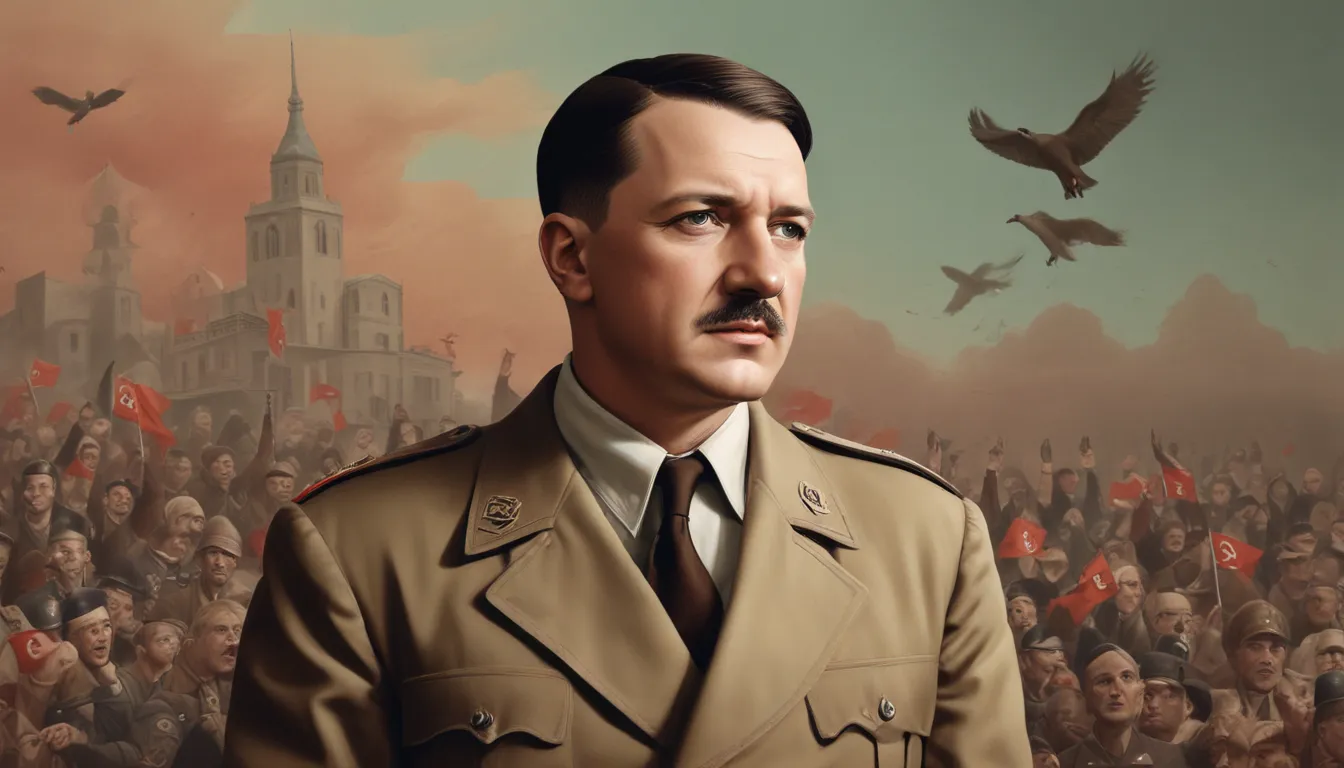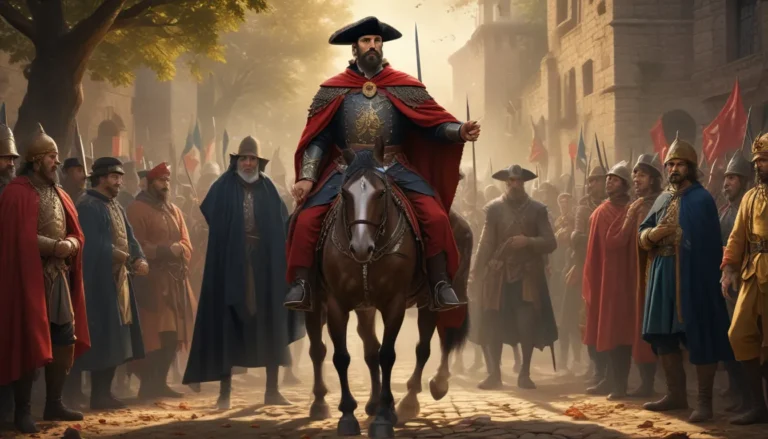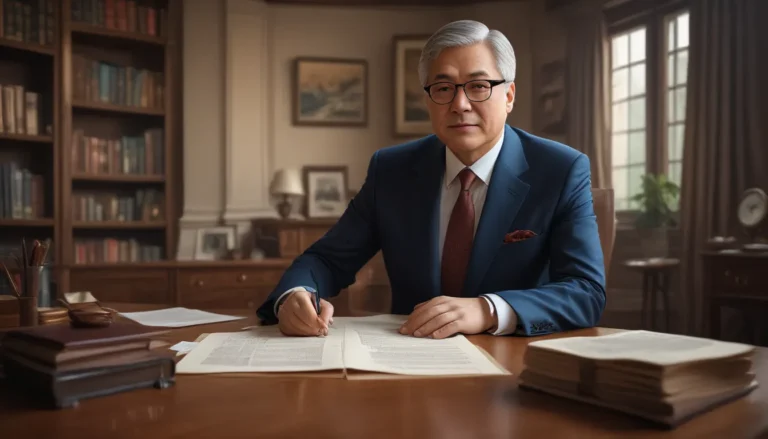The images in our articles may not match the content exactly. They are used to grab your attention, not to show the exact details in the text. The images complement the text but do not replace it.
Adolf Hitler, the infamous dictator of Nazi Germany, remains a figure of great fascination and controversy to this day. His reign of terror during World War II left an indelible mark on the world, showcasing the dangers of unchecked power and extremist ideologies. Despite the atrocities committed under his rule, there are several intriguing facts about Hitler’s life that shed light on his character and actions. From his failed art career to his strategic choices and devastating legacy, exploring the complexities of his life allows us to gain insights into the man behind the dictator.
Uncovering the Enigmatic Persona
Adolf Hitler’s life was shrouded in mystery, from his early aspirations as an artist to his eventual transformation into a ruthless dictator. Delving into the intriguing aspects of his personal history reveals a complex and enigmatic persona that defies traditional understanding. Let’s explore twelve fascinating facts about Adolf Hitler that provide a glimpse into the life and actions of this notorious figure.
A Failed Artist Turned Dictator
One of the lesser-known facts about Adolf Hitler is his failed career as an artist. Before his foray into politics, Hitler harbored aspirations of becoming a painter. However, his applications to the Vienna Academy of Fine Arts were rejected twice, leading to a significant turning point in his life.
The Strategic Mustache
Hitler’s iconic mustache was not merely a fashion choice but a strategic decision. During World War I, soldiers were required to shave their beards to ensure proper gas mask usage. Hitler opted to keep a trimmed mustache that fit snugly beneath his mask, inadvertently creating a trademark look that would become synonymous with his image.
Mein Kampf: A Pivotal Manifesto
“Mein Kampf,” meaning “My Struggle,” served as Hitler’s autobiographical manifesto and a blueprint for his radical ideology. The book delved into his deep-rooted antisemitism and laid the groundwork for his extremist policies that would shape the course of history.
The Rise of the Third Reich
Hitler’s ascent to power saw the establishment of the Third Reich, ushering in an era of totalitarian rule in Germany. His Nazi Party’s grip on the country led to the proliferation of propaganda and the consolidation of power under his authoritarian regime.
The Persecution of Jews
One of the most harrowing aspects of Hitler’s reign was the systematic persecution and genocide of Jews during the Holocaust. The atrocities committed under his orders resulted in the deaths of six million Jews, marking a dark and tragic chapter in human history that continues to haunt us to this day.
The Mastermind Behind Propaganda
Hitler’s keen understanding of propaganda played a pivotal role in shaping public opinion and consolidating his power base. His skillful manipulation of the media and dissemination of propaganda allowed him to control the narrative and sway the minds of millions of people.
The Failed Beer Hall Putsch
In 1923, Hitler attempted a coup known as the Beer Hall Putsch in Munich. The uprising aimed to seize control of the Bavarian government but was swiftly quashed by authorities. Hitler’s arrest and subsequent trial marked a crucial juncture in his political career.
The Architect of Blitzkrieg
Hitler’s military strategy revolutionized warfare with the concept of blitzkrieg, or “lightning war.” This novel approach involved swift and coordinated attacks, leveraging advanced air power to achieve rapid victories on the battlefield.
The Devotion of His Followers
Hitler’s passionate following, particularly among the youth through organizations like the Hitler Youth, underscored the cult-like adulation he inspired. Young Germans were indoctrinated with Nazi ideology from an early age, fostering unwavering loyalty to the Fuhrer and his vision for Germany.
The Downfall and Death
As Allied forces closed in on Berlin in 1945, Hitler retreated to his bunker and made the fateful decision to take his own life. On April 30th, he committed suicide alongside his wife Eva Braun, marking the tragic end of his tyrannical rule.
The Legacy of Destruction
Adolf Hitler’s legacy is one of devastation and war, leaving behind a trail of destruction that forever altered the course of history. His actions led to the loss of millions of lives, the collapse of nations, and a profound scar on humanity that serves as a poignant reminder of the atrocities committed under his regime.
Understanding the Complexities
Exploring these twelve fascinating facts about Adolf Hitler provides valuable insights into the intricate layers of his character and the circumstances that propelled him to power. While his reign remains a dark chapter in history, delving into the nuances of his life allows us to grasp the complexities of his persona and the enduring impact of his actions.
FAQs: Unraveling the Myths
- Was Adolf Hitler actually Austrian?
-
Yes, Adolf Hitler was born in Braunau am Inn, Austria in 1889.
-
Did Hitler serve in World War I?
-
Yes, Hitler served as a soldier during World War I and was wounded twice.
-
Did Hitler have any family?
-
Hitler had siblings but no children of his own, reportedly maintaining a strained relationship with his family.
-
Was Hitler really vegetarian?
-
While Hitler adopted a vegetarian diet later in life for health reasons, there are reports that he occasionally consumed meat.
-
How did Hitler rise to power?
-
Hitler capitalized on the economic turmoil and social unrest in Germany, eventually ascending to the position of Chancellor and consolidating power.
-
Did Hitler believe in occultism?
-
Hitler displayed a strong interest in occultism and pseudoscience, consulting astrologers and occult advisors for guidance.
-
Did Hitler write his own book, Mein Kampf?
-
Yes, Hitler penned Mein Kampf while serving a prison sentence following the failed Beer Hall Putsch of 1923.
-
Did Hitler have a specific ideology?
-
Hitler’s ideology, known as National Socialism or Nazism, combined extreme nationalism, racism, and anti-Semitism.
-
How did Hitler die?
- Hitler died by suicide in his Berlin bunker on April 30, 1945, as Allied forces closed in on the city.
In Conclusion
Adolf Hitler’s life and actions continue to captivate and horrify individuals worldwide. By unraveling the intricacies of his character and exploring the historical context of his reign, we can glean valuable insights into the dangers of unchecked power, propaganda, and hatred. It is essential to study and understand figures like Hitler to prevent the repetition of past atrocities and strive towards a world built on principles of peace, tolerance, and compassion. As we delve into the haunting legacy of Adolf Hitler, let us pledge to learn from history and endeavor to create a future free from the shadows of tyranny and oppression.






